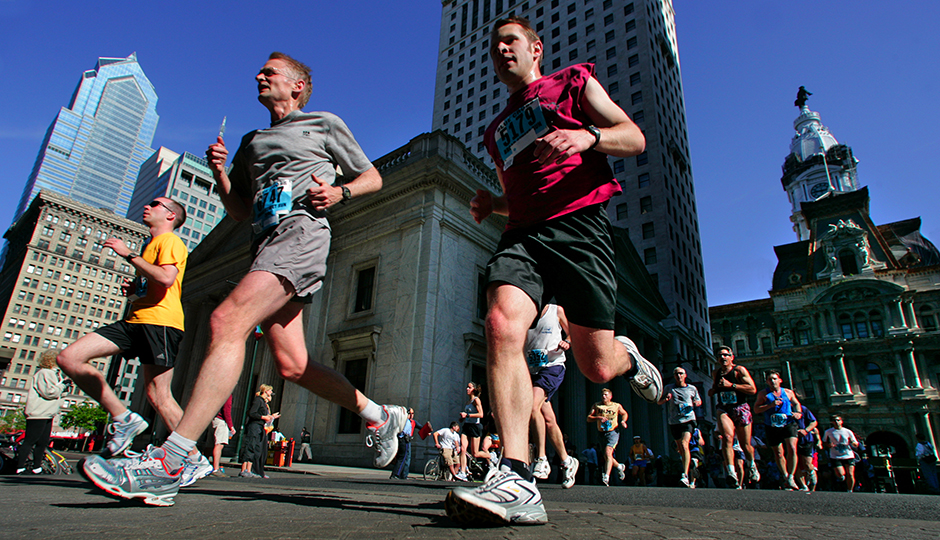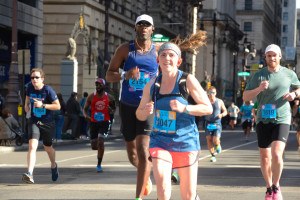Broad Street Run Training: How to Fuel Up for Long Runs and the Big Race

Photo by G. Widman for Visit Philadelphia
I ran my first Broad Street Run in 1982; there were only 2,088 finishers in the race’s third year.
The Broad Street Run has grown a lot since then! And so has knowledge about what athletes should eat. The 1980s marked the emergence of the field known as sports nutrition. Back then, exercise physiologists were discovering that endurance athletes benefited from consuming approximately four to five grams of carbohydrates per pound of body weight daily.
It’s now 2015, and as a registered dietitian I find many runners are confused about how much fuel they need for a long run. Having the right nutrition plan can make the difference between finishing Broad Street strong or not finishing at all.
Here’s what you need to know:
- You need carbohydrates. Carbs are a good source of glucose, a form of sugar that our brain, nerves and muscles need to function. A small amount of glucose circulates in our blood, but most is stored in our muscles and liver in another form called glycogen.
- On a run of two hours or less, you can rely on your body’s glycogen stores. The food you ate before the run will power you through. That’s the pasta dinner on Saturday and whatever carb you’ve tried during training Sunday morning.
- Your body can store only a limited amount of glycogen. When you deplete that supply, your muscles and brain run out of fuel, and you feel both physically fatigued and mentally drained. This is called “hitting the wall”: your brain and muscles have run out of carbs. Consuming carbs can help you avoid crashing and burning.
- If you know you’ll be out on Broad Street (or any run) for more than two hours, you’ll need carbs along the way. For those runners, plan on 100 to 250 calories (or 25 to 60 grams of carbs) per hour after your first hour of running. That’s one to 2 1/2 sports gels or 16 to 40 ounces of sports drink per hour. Sports nutritionist Nancy Clark has been quoted saying, “A Hummer needs more gas than a Mini Cooper,” and she’s right: For smaller runners, you might only need 100 calories every hour; a larger runner up to 250 calories per hour. And the less fit you are, the faster you burn through stored carbs, meaning you’ll need more calories mid-run to keep going.
- But be careful about eating/drinking too much during the run. Your stomach won’t be able to digest all the carbohydrates and you could experience sloshing, bloating or cramping (carb overload).
The key is for runners to experiment with what works (and what doesn’t work) well before race day. You never, ever want to try a brand new fueling strategy on the day of the race, just in case something goes wrong. Training runs are the best opportunities to test different carb sources and practice timing your intake.
After finishing a long, hard run — like when you cross the finish line on May 3rd — your muscles will need carbohydrates to refuel. At the Broad Street Run, enjoy the race’s finish-line options like bagels and bananas. And remember: a little protein enhances the recovery process and may reduce muscle soreness.
…………..
Althea Zanecosky is a registered dietitian/licensed nutritionist and an active member of the Academy of Dietetics and Nutrition’s Sports and Cardiovascular Nutrition practice group. She has served as an adjunct professor of sports nutrition in the graduate school at Drexel University. Althea is a long distance runner and has competed in many marathons, including Boston. Contact Althea at altheaz@comcast.net.


